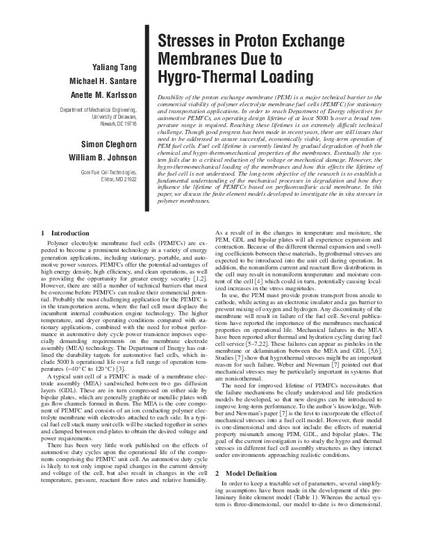
Durability of the proton exchange membrane (PEM) is a major technical barrier to the commercial viability of polymer electrolyte membrane fuel cells (PEMFC) for stationary and transportation applications. In order to reach Department of Energy objectives for automotive PEMFCs, an operating design lifetime of at least 5000 h over a broad temperature range is required. Reaching these lifetimes is an extremely difficult technical challenge. Though good progress has been made in recent years, there are still issues that need to be addressed to assure successful, economically viable, long-term operation of PEM fuel cells. Fuel cell lifetime is currently limited by gradual degradation of both the chemical and hygro-thermomechanical properties of the membranes.Eventually the system fails due to a critical reduction of the voltage or mechanical damage. However, the hygro-thermomechanical loading of the membranes and how this effects the lifetime of thefuel cell is not understood. The long-term objective of the research is to establish a fundamental understanding of the mechanical processes in degradation and how they influence the lifetime of PEMFCs based on perfluorosulfuric acid membrane. In this paper, we discuss the finite element models developed to investigate the in situ stresses in polymer membranes.

This research has been supported by grants from the U.S. Department of Energy, and W.L. Gore and Associates, Inc.